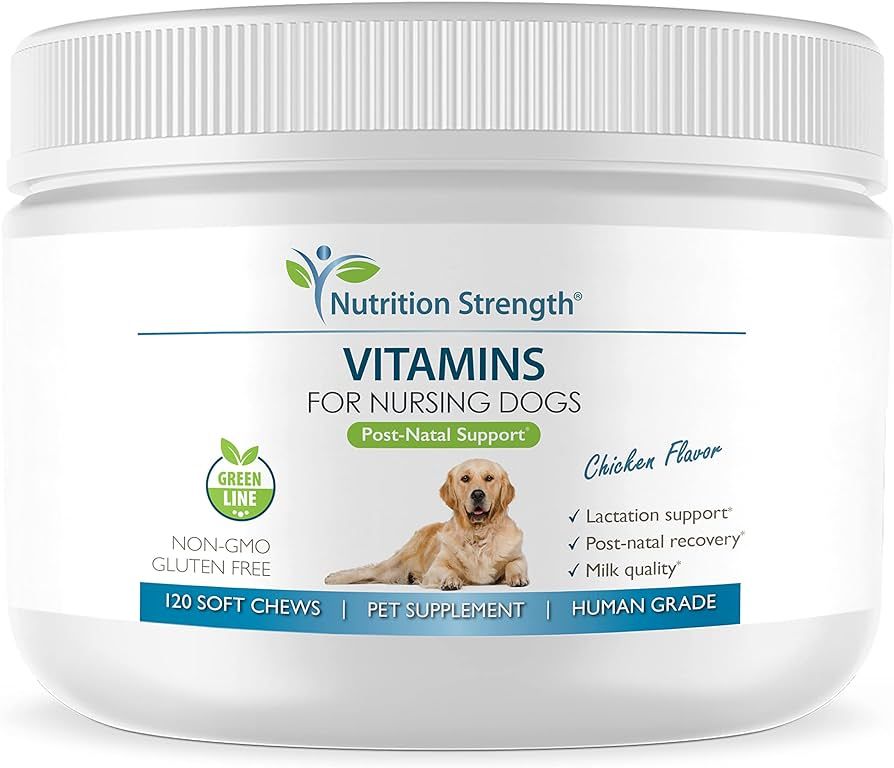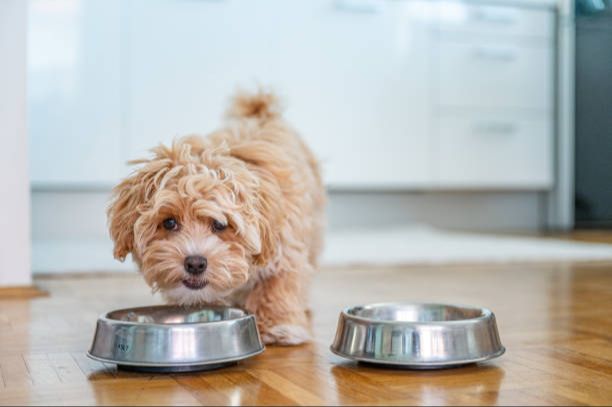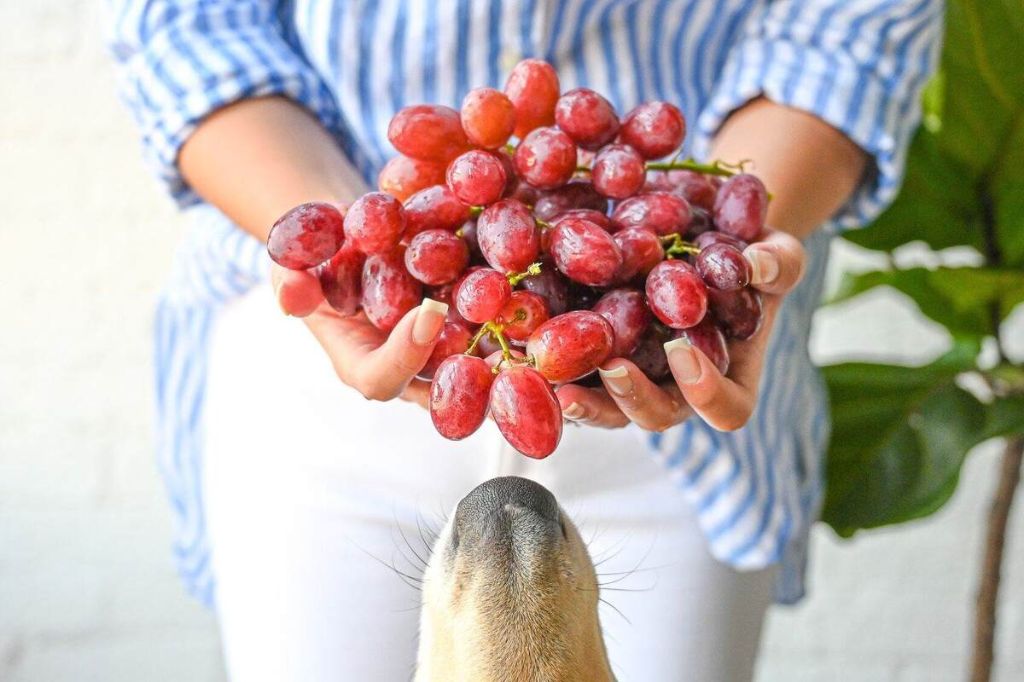Typical Ingredients in Dog Food
Most commercial dog foods contain a combination of meat, grains, vegetables, fruits, and vitamins/minerals. Some of the most common ingredients include:
Meat: Meat is an excellent source of protein for dogs. Beef, chicken, lamb, and fish are commonly used. Meat meals, by-products, and animal derivatives also provide protein but may be lower quality.
Grains: Corn, wheat, rice, oats, barley, and other grains provide carbohydrates and fiber. Whole grains are preferred over refined grains.
Vegetables: Carrots, peas, sweet potatoes, and spinach add vitamins, minerals and fiber. They usually make up a small portion of the food.
Fruits: Apples, blueberries, cranberries, and bananas provide nutrients and flavor. As with veggies, fruits are a minor ingredient.
Vitamins & Minerals: Essential vitamins and minerals like vitamin E, zinc, calcium, and iron are added to create a balanced diet.

Other ingredients like fats, oils, and preservatives are also commonly found in dog food. The quality and inclusion of ingredients varies greatly between brands and formulas.
Source: https://www.ukpetfood.org/resource/whats-in-dog-food.html
Dry vs. Wet Food
Dry dog food and wet dog food both provide complete and balanced nutrition for dogs. However, there are some key differences between the two formats.
Dry dog food, also known as kibble, contains about 10% moisture. It is made by an extrusion process, where the ingredients are cooked under high temperatures and pressure to create the kibble. Dry food is convenient, shelf-stable, inexpensive, and promotes dental health by scraping tartar off teeth as the dog chews (source).
Wet dog food contains about 75% moisture. It comes in canned or pouch formats. Canned wet food is processed using pressure cooking, while pouches are sterilized after sealing. Wet food typically contains more animal protein and fat than dry food. The higher moisture content can help with hydration and be easier for some dogs to chew and digest (source).
How Much to Feed
The amount of food your dog needs depends on several factors like age, size, and activity level. Puppies require more food for growth and development, while senior dogs need less due to decreased metabolism. Small breeds only need 1/2 to 1 cup per day, while large breeds may need over 4 cups. Highly active dogs require more calories than couch potato dogs.
It’s best to start with recommended amounts on the dog food packaging or consult your vet. For an adult small dog under 20 lbs, feed 3/4 to 1-1/2 cups per day split into two meals. Medium dogs between 20-50 lbs need 1-3/4 to 2-2/3 cups per day. Large breeds between 50-100 lbs need 3 to 4-1/2 cups per day. Giants breeds over 100 lbs may need up to 8 cups or more depending on energy requirements. Monitor your dog’s weight and adjust amounts gradually as needed.
Puppies should be fed 3-4 times per day. Consult your vet for exact recommendations based on growth rate. Adult dogs can be fed just once or twice per day. Make sure to provide the daily recommended intake evenly split for the number of meals.
Feeding Schedule
The feeding schedule for dogs depends on their age and size. Here are some typical recommendations:
Puppies

Puppies need to eat more frequently than adult dogs. It’s recommended to feed puppies 3-4 times per day until they are around 6 months old. This helps support their rapid growth and gives their digestive system more time to process food [source].
Adult Dogs
Most adult dogs can be fed 1-2 times per day. Feeding twice is preferable for medium and large breeds, as it helps prevent bloating and allows for smaller portions [source]. Smaller dogs may do well with one meal a day.
Senior Dogs
Older dogs often do better with 2-3 smaller meals throughout the day. This helps them properly digest and absorb nutrients as they age [source]. Keeping them on a consistent feeding schedule is important.
Special Diets
Some dogs may require special diets due to health conditions, allergies, or other dietary needs. Here are some of the most common special diets for dogs:
Prescription Diets
Prescription diets are formulated to help manage specific health conditions in dogs, such as kidney disease, digestive issues, or urinary problems. These diets are only available from veterinarians and are designed to aid in disease management. Some examples of prescription dog foods include Hill’s Prescription Diet and Royal Canin Veterinary Diet.
Limited Ingredient Diets
For dogs with food sensitivities or allergies, limited ingredient dog foods contain fewer ingredients, making it easier to identify triggers. They use a single source of protein and carbohydrate. Some limited ingredient dog food brands are Natural Balance, Merrick Limited Ingredient Diet, and Blue Buffalo Basics.
Raw Food Diets
Some dog owners choose to feed raw food diets, which typically consist of raw meats, bones, vegetables, and fruits. Advocates believe raw diets are more natural for a dog’s health. However, raw diets require careful formulation to ensure nutritional balance and to reduce risk of bacterial contamination. Some popular raw dog food brands include Primal, Stella & Chewy’s, and Instinct.
People Foods to Avoid
While dogs can eat some human foods, there are many that should be avoided. Some contain toxic ingredients, while others are simply unhealthy and can lead to obesity, diarrhea or other issues. According to the ASPCA and Humane Society, some of the most dangerous foods for dogs include:
Chocolate – Chocolate contains theobromine and caffeine, which are toxic to dogs. The darker the chocolate, the more dangerous it is. Even small amounts can cause vomiting, diarrhea, rapid breathing, muscle tremors and seizures.
Grapes and Raisins – Grapes and raisins can cause severe kidney damage in some dogs. Experts are unsure what exactly makes them toxic. Even a small number of grapes or raisins can make a dog ill.

Onions, Garlic, Chives – These vegetables and herbs can damage red blood cells and lead to anemia in dogs if a large enough amount is eaten. Garlic is considered more toxic than onions.
Xylitol – An artificial sweetener found in sugar-free gum, candy and baked goods. It can cause a dangerous drop in blood sugar and liver damage in dogs.
How Dogs Eat
Dogs have a very different eating style and digestive process compared to humans. When eating, dogs use their sharp teeth and jaws to quickly bite off smaller pieces of food that they then chew and swallow https://indianapublicmedia.org/amomentofscience/dogs-eat.php. They do not chew food thoroughly or move it around in their mouths like humans do. This is because dogs have a very minimal amount of saliva compared to humans, and their saliva does not contain the enzymes needed to start breaking down carbohydrates while chewing. Therefore, dogs simply swallow larger pieces of minimally chewed food. The mechanical breakdown and chemical digestion of food primarily takes place later in the digestive tract.
Once swallowed, the food moves down to the stomach where strong muscular contractions and gastric juices break it down further. The stomach contents are then passed on to the small intestine where most of the nutrient absorption happens with the help of digestive enzymes from the pancreas and bile from the liver. Waste material that cannot be digested moves on to the large intestine where water is absorbed, forming feces. The feces is stored in the colon and rectum until the dog is ready to defecate.
Using Food for Training
Food can be an effective reward when training dogs. Using treats allows you to mark desired behaviors immediately and reinforce them. This reward-based training is helpful for teaching basic commands like sit, stay and come as well as more complex behaviors.
When using food rewards, it’s important to exercise portion control. Small pieces of soft, moist treats work best so you don’t overfeed. According to the American Kennel Club, good options for training include diced chicken, liver, cheese, hot dogs, meatballs or commercial training treats. Zuke’s Mini Naturals and Wellness Puppy Bites are recommended for their soft texture and bite-size.
The key is to reward your dog with a small treat immediately after they demonstrate the desired response. Over time, you can taper off food rewards as your dog learns. Food motivation helps kickstart training, but your dog should not depend on constant treats. Praise can become the primary reinforcer.
Feeding Tips
Here are some tips to feed your dog properly:
Separate dogs at mealtimes if you have multiple dogs. Feed each dog in a separate room with a closed door. This prevents any food aggression or resource guarding during mealtimes. Dogs should feel relaxed when eating without worrying about another dog approaching their food.

Consider using elevated bowls for tall or large breed dogs. Elevated bowls allow them to eat comfortably without having to bend down as far. This can help prevent neck and back issues. Make sure the stand is sturdy and prevents tipping. You can purchase bowls that attach to a stand or simply place a bowl on an overturned small bucket or container to lift it.
Always supervise mealtimes for your dog. Make sure they eat slowly and don’t choke or vomit. This also allows you to monitor how much they are eating. Don’t free feed throughout the day. Stick to designated meal times.
Wash food and water bowls frequently with hot soapy water. Bacteria and mold can grow in them and make your dog sick if they aren’t cleaned regularly.
Signs of Poor Nutrition
One of the most obvious signs of poor nutrition in dogs is a dull, dry coat. Dogs with nutritional deficiencies often have coats that lack shine and luster. Their fur may appear sparse or thin in areas. Excessive shedding is also common when a dog is not getting proper nutrition. The skin underneath the coat may become flaky or irritated as well.
Sudden or abnormal weight changes can also indicate nutritional issues. Some dogs start rapidly losing weight even if their appetite seems normal. On the flip side, other dogs may gain weight quickly even without an increase in calories. These unexplained weight fluctuations suggest the body is not properly absorbing or utilizing nutrients from food.
According to Vetericyn, other symptoms of nutritional deficiencies include decreased energy, slowed wound healing, muscle loss, and an increased susceptibility to infections [1]. Porch Potty also lists lethargy, behavioral changes, and a sad expression as potential signs [2]. If a dog shows any of these symptoms, it’s important to assess their diet and make adjustments as needed to restore good health.
